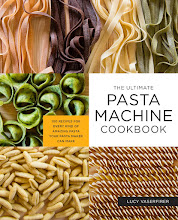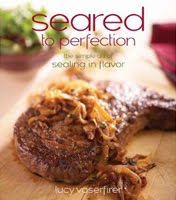How do you keep from crying when you chop an onion? I’ve heard of all sorts of creative suggestions: soak it, refrigerate it, chew gum, turn on a fan, keep your mouth shut, burn a candle, hold a match between your lips—I wonder if you’re supposed to light it first, wear goggles—how fashionable, or cut it under water—sounds slippery, which is scary when there’s a knife involved, and I don’t think that my cutting board would fit into the sink anyhow. Oh wait…maybe they mean underwater like in a swimming pool…now the goggles are starting to make sense…riiight. Did I say
creative suggestions? I think I meant silly or questionable or downright absurd. So here’s my suggestion: learn how to chop an onion like the pros, quickly and efficiently and with a sharp knife. You won’t shed a tear. And, OK, I’ll admit that refrigerating onions does help a bit too.
To dice, or chop, an onion, start by trimming the root.
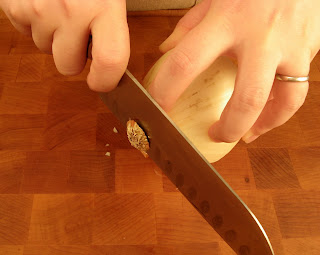
(Don’t actually cut off the root end, just trim it to keep the little rootlets from getting mixed in with the rest of the onion later. Also, the root end of the onion will act as a little handle, keeping the onion together and making it easier to hold onto as you cut it, especially as you reach the end.) Cut off the stem end.
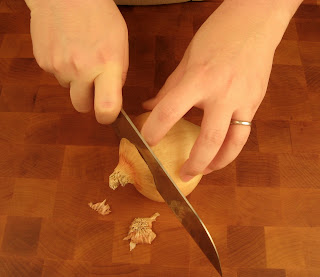
Peel the onion.

Place the onion stem end down, and cut it in half.
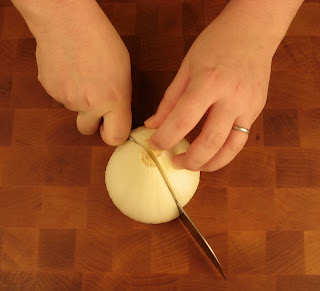
Working with one half at a time, position the onion near the edge of your cutting board (so that your knuckles don’t hit the board as you work) with the cut side down and the stem end facing your knife. Make a series of horizontal cuts parallel to the cutting board.
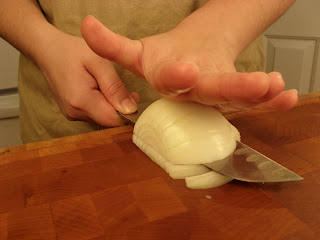
But don’t cut all the way through.

And be careful to keep your fingers out of the way of the blade.
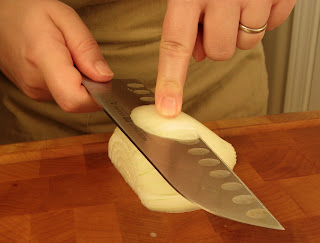
Reposition the onion in the center of your cutting board with the stem end facing the tip of your knife and make a series of vertical cuts parallel to the plane from the root end to the stem end of the onion.

Again, don’t cut all the way through the root end.
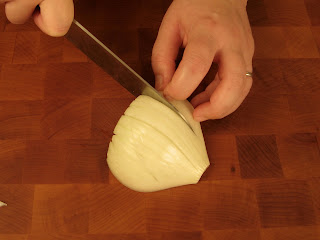
Finally, reposition the onion in the center of your cutting board with the stem end facing your knife and make a series of cuts at a 90-degree angle to the other cuts, as if you were just
slicing the onion.

When you reach the root end, discard it.

Onions diced in this manner are relatively consistent, which means they will cook very evenly.
Some cooks like to switch the order of the first and second series of cuts, making the cuts from the root to the stem of the onion first and then making the cuts parallel to the board. But since the most precarious part of dicing an onion is cutting horizontally, it really is easiest to do that first, while the onion half is still intact.
The distance between cuts determines the size of the dice.
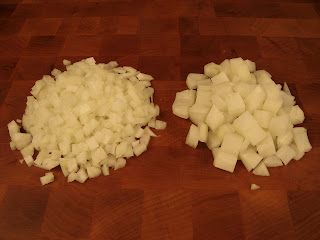
For a fine dice, make the cuts closer together, and conversely, for a large dice, make the cuts farther apart. A fresh salsa is great with finely diced onions. A medium dice is usually a good choice for sautéing. Onions cut into a large dice are best for roasting, stewing, and even stir-frying.
This very same technique, but of course on a smaller scale, is used for mincing shallots.Click here for information on how to slice and julienne onions.





























